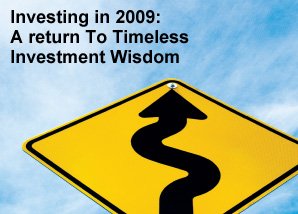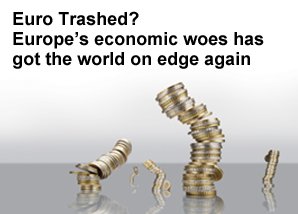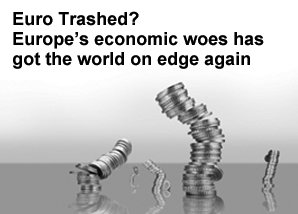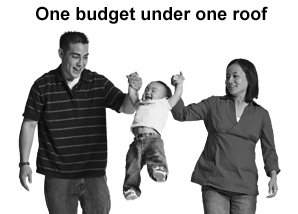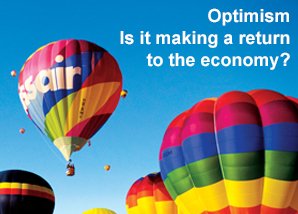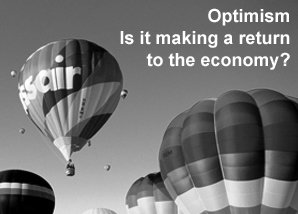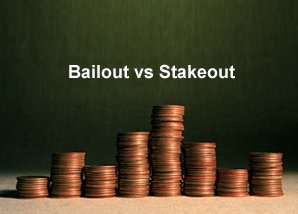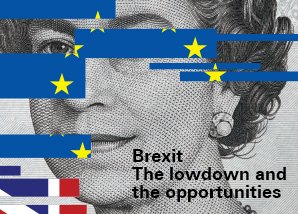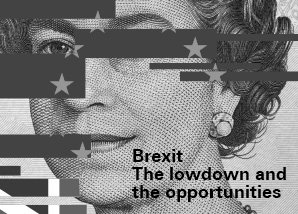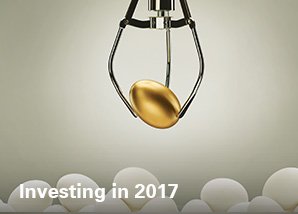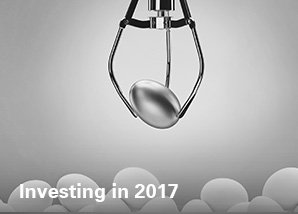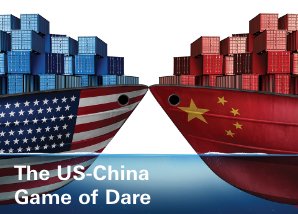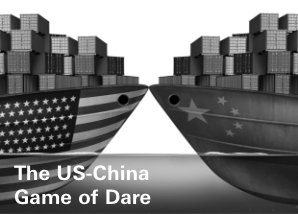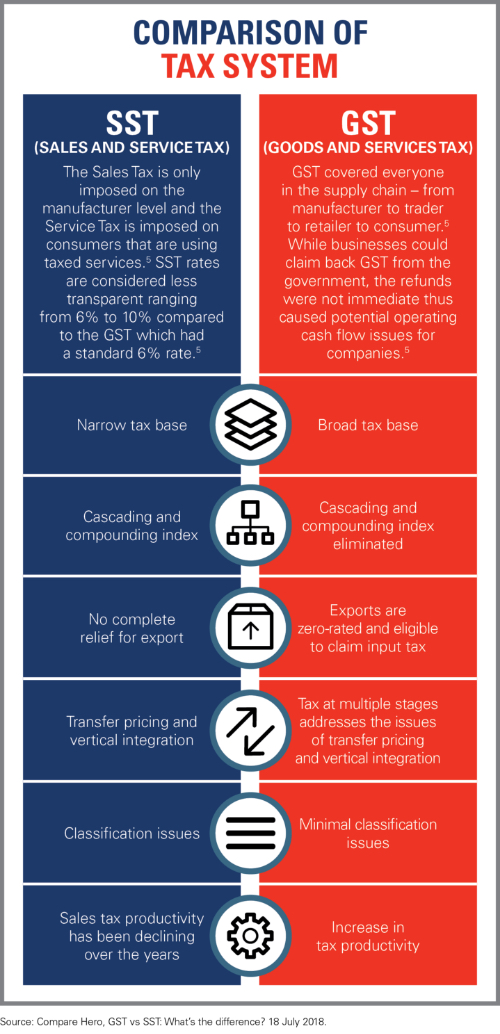
The What
Under the new SST, the 10% sales tax is a single stage tax that is imposed on a single tier within the manufacturer level, while the 6% service tax is imposed at the end-consumer level for services.4
In comparison, the 6% GST was a blanket tax system which was imposed on every tier of the supply chain from the start until it reached the end-consumer.4 Therefore, the longer the line of supply chain, the larger the amount of tax imposed, and the higher the price of goods when it reached the end-consumer.4
The Impact
For us as consumers, the main question is: will prices go down or will they remain status quo with the SST?
While for economists and the corporate sector, the major concern is: how will the government cover the anticipated shortfall in revenue moving from the GST to the SST system?
Overall, economists believe that a significant price reduction post-SST will be unlikely for consumers.4 While overall prices should come down compared to GST levels, the view is that prices of certain goods and services may increase post-implementation of the SST including consumer durables, household electrical appliances and dining at restaurants.4
One of the key reasons for the new government scrapping the GST in favour of the SST is to reduce Malaysia’s rising cost of living.4 When the Finance Ministry announced the SST, it said that the new SST system would benefit Malaysia’s low-income earners in the long run.4 As such, the new SST is expected to be tweaked and designed to ensure that the impact on the lower-income groups would be proportionately less – however, no specific details are available at the moment on how this will be achieved.4
So, there is the expectation that the SST will be beneficial to the people, as it will enable Malaysians to cope better with the cost of living – more so for specific segments of the population.6
Under the GST system, 60% of the consumer price index basket of goods and services were taxable; this will be reduced to 38% under the SST.6 The Finance Ministry has also given its assurance that the implementation of an improved version of SST would lead to RM23 billion in taxes collected being “returned” to the people, thus helping them to ease their financial burden.6
That being said, it is expected that the new SST would likely cover a wider range of goods and services compared to the old SST system to generate more income for the government.4 Lifestyle goods and services consumed by higher-income households would likely be subjected to a higher sales tax.4 In the old SST, for example, a 20% sales tax was imposed on alcoholic and non-alcoholic compound preparations used for the making or manufacturing of beverages.4
Will the price of goods increase, decrease or stay the same?
It all depends on a number of factors including:
- How many levels there are in the product supply chain between manufacturer and consumer?5
- What level of taxes are applied to different products and services?5
- What are the prevailing tax exemptions for businesses?5
A Better Outcome for Middle Malaysia
According to Datuk Tan Sim Kiat, adviser of indirect tax at KPMG Tax Services Sdn Bhd, the SST should be less painful for consumers.7 Malaysians will have more spending power because there will not be any SST at the retail stage as the tax is only at the manufacturer level.7 Hence, the impact of a single-stage tax like SST on consumers is normally lower.7
While the implementation of the SST would generally increase the purchasing power of Malaysians, the biggest winners from the scrapping of the GST and reintroduction of the SST would likely be those in the low to medium-income brackets.6 According to Kuala Lumpur International Chamber of Commerce advisor, Datuk Dr Sharifuddin Musa, when the GST was enforced, everybody had to pay the 6% tax on goods regardless of whether they were rich or poor, but with SST consumer purchasing power will increase because they no longer have to pay more for goods.6
The view of economists is that prices of big-ticket items will probably go up after SST implementation, while prices of consumer goods would likely remain the same.4 To ensure Malaysians enjoy the savings as a result of SST, price abuses will need to be monitored and regulated by the relevant governmental bodies.4
A Shortfall for the Country
At the National Tax Conference in July 2018, Finance Minister Lim said that following the zero-rating of the GST, the federal government is expected to lose roughly RM21 billion in revenue per year.1 This is based on the GST collection in 2017 worth RM44 billion and targeted full-year collection for the SST at around RM21 billion.4

To claw back the difference, the government has identified RM10 billion worth of expenditure savings through belt-tightening exercises including cutting down on expenditures and inefficiencies.1 In addition, Lim said rising crude oil prices and dividends from government-linked companies would also bring in extra revenue for the federal government in 2018.1
What will help is an immediate lift in consumer spending if Malaysians feel they have more spending power.7 KPMG Tax Services’ Tan believes that if there is higher demand from consumers, business earnings and volume will improve creating multiplier effects for the Malaysian economy.7
At this point, we can only presume prices will adjust differently based on the types of goods and services, but there is no actual certainty or predictable outcome that can be expected from the implementation of SST.5 We will have to wait and see what rates will be set for different goods and services, and what items will or will not be taxed.5
While we wait for more clarity on the SST, it is probably useful to keep our finances in check and be prudent with our spending, while continuing to manage our investment portfolios with regular reviews to rebalance and maintain portfolio diversification to cope with any possible change in the economic environment.







